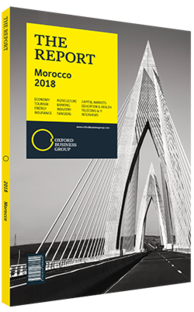Abdellatif Jouahri, Governor, Bank Al Maghrib (BAM): Interview

Interview: Abdellatif Jouahri
To what extent is the Moroccan banking sector characterised by monopolistic tendencies?
ABDELLATIF JOUAHRI: The level of concentration within the Moroccan banking sector is relatively high. However, this has not resulted in a lack of competition. Indeed, it has become more intense over the past years. This is illustrated by the strengthening of the capacity of the banking supply; the development of banking coverage, which has reached nearly 70%; a bank credit penetration rate of 80%; and a downward trend in the cost of credit over the last decade. Most certainly, various customer segments, notably households, large businesses and small and medium-sized enterprises, have benefited from these developments. The central bank, however, strives to ensure that competitive practices in the sector are sound, while at the same time working to protect the clients of credit institutions.
What are the challenges of applying the Basel III regulations in Morocco?
JOUAHRI: Since the beginning of 2010 the BAM has worked to ensure the gradual application of the Basel III standards, adopting an approach based on consultation with banking professionals. To ensure proper transposition of these standards, we have taken into consideration three dimensions, namely, the transpos-ability of norms in relation to the Moroccan context, the potential impact on the market and the financing in the economy, and the capacities of actors to implement a major reform agenda in a timely and high-impact manner. As part of the first phase the BAM has transposed two major Basel III reforms: the capital and short-term liquidity regime. This has been done according to a schedule that converges with the Basel calendar based on a gradual application of new rules until 2019. Regarding the net stable funding ratio, which restricts the long-term financing of banks to the long-term resources available to them, the related reform has not been transposed at this stage in Morocco.
How would you asses the current demand for non-bank payment services?
JOUAHRI: The banking law passed in 2006 introduced payment institutions. This enabled new non-bank payment operators to enter the market at the end of 2017. They will be authorised, in addition to credit institutions, to hold payment accounts and offer payment services to their customers. The creation of these institutions will, on the one hand, create a competitive market for payment services and, on the other hand, provides a broader geographical coverage of payment through the development of a network of local agents. It will also enable the banked populations to benefit from new means of payment by offering originality and speed of execution to populations with little or no access to low-cost basic payment services, mainly by offering mobile financial services.
How will the evolution of outstanding debts affect the Moroccan market in 2018?
JOUAHRI: After a downward cycle in the rate of outstanding claims since 2004, there has been an upwards trend between 2010 and 2015. Concomitantly, they have seen their growth rate rise by an average of 14%, in a context marked by a slowdown in non-agricultural GDP growth, sluggish bank credit and longer inter-firm payment delays. The improvement in the national and international economic situation in 2016 and 2017 was accompanied by a deceleration in the growth rate of outstanding loans to 6% on average. At the end of June 2017 it stood at 7.6% of total outstanding bank loans. The results of the macro-stress tests conducted by the central bank indicate that the rate of outstanding debts should remain at the same level in 2018, based on a scenario built on a recovery of economic growth. This will happen in conjunction with a rebound in agricultural added value and a slight improvement in the performance of non-agricultural activities.
You have reached the limit of premium articles you can view for free.
Choose from the options below to purchase print or digital editions of our Reports. You can also purchase a website subscription giving you unlimited access to all of our Reports online for 12 months.
If you have already purchased this Report or have a website subscription, please login to continue.

